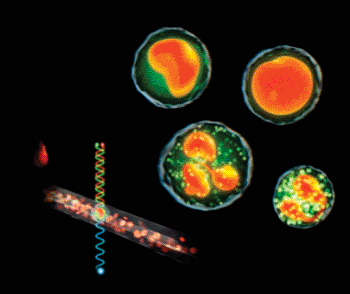Portable Device Counts Leukocytes
By LabMedica International staff writers
Posted on 15 Apr 2013
A point-of-care test for the leukocyte count has been developed that uses a microflow cytometer and a fluorescent dye assay.Posted on 15 Apr 2013
By combining the fluorescent assay with a sheathless microflow design, the novel method achieved a minimal sample volume by eliminating excessive dilution and sheath flow.

Image: New Dye Assay for White Blood Cells (Photo courtesy of California Institute of Technology).
Medical engineers at the California Institute of Technology (Pasadena, CA, USA) collaborating with LeukoDx (Jerusalem, Israel) have developed a portable white blood cell counter that could improve outpatient monitoring of patients with chronic conditions such as leukemia or other cancers.
The prototype device is able to count all five subtypes of white blood cells within a sample. It provides an accurate differential of the four major subtypes, lymphocytes, monocytes, eosinophils, and neutrophils. In addition, it could be used to flag an abnormally high level of the fifth subtype, basophils, which are normally too rare representing less than 1% of all white blood cells, for accurate detection in clinical tests. The whole test uses only 5 μL of blood and 68 μL of reagents in total.
The detection assay uses three dyes to stain white blood cells so that they emit light or fluoresce, brightly in response to laser light. Blood samples are treated with this dye assay before measurement in the new device. The first dye binds strongly to the DNA found in the nucleus of white blood cells, making it simple to distinguish between white blood cells and the red blood cells that surround and outnumber them. The other two dyes help differentiate between the subtypes. The entire new system fits in a small briefcase measuring 30.5 cm × 23 cm × 12.7 cm, and could easily be made into a handheld device.
The stained blood sample flows through this microfluidic channel to the detection region, where it is illuminated with a laser, causing it to fluoresce. The resulting emission of the sample is then split by a mirror into two beams, representing the green and red fluorescence. Due to the dye assay, the white blood cell subtypes emit characteristic amounts of red and green light. Therefore, by determining the intensity of the emissions for each detected cell, the device can generate highly accurate differential white blood cell counts.
Yu-Chong Tai, PhD, the project's principal investigator, said, “The white blood cell counts from our new system closely match the results from tests conducted in hospitals and other central clinical settings. This could make point-of-care testing possible for the first time." The study was published on January 18, 2013, in the journal Lab on a Chip.
Related Links:
California Institute of Technology
LeukoDx




 assay.jpg)








